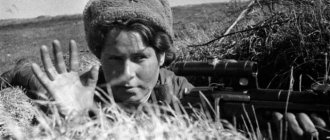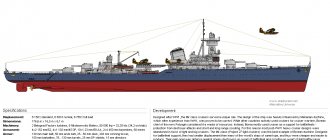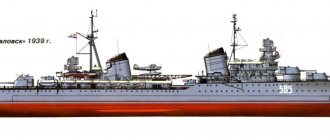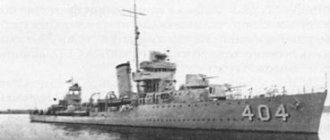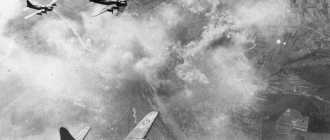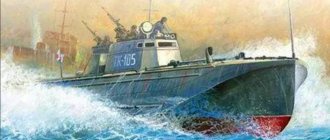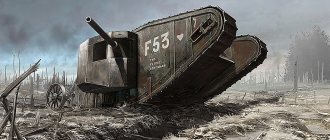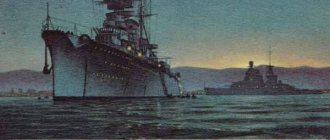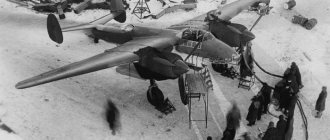History of creation
Scotsman and Irishman. Yes, only two ships were built. Their fates turned out to be different, but we can only say unequivocally that they were simply beautiful ships. "Edinburgh" took part in the sinking of "Bismarck" , "Belfast" took part in the battle in which the "Scharnhorst" . But about the track record in due time, let’s go in order.
And the order was as follows: having cut their teeth on the development and construction of the Linder, Arethusa, Sydney and Southampton series of cruisers, the British shipbuilders came to their crowning glory - the Town series, ships not without flaws, but very, very good .
In principle, the Towns came very close to the heavy cruisers of the County type in terms of armament and power plant power, and even surpassed them in terms of armor.
At that time, the arms race was already in full swing in the world, and the main shake-up for everyone was caused by the Japanese, who created the Mogami, the armament of which at that time consisted of 15 155-mm guns and had an armored belt 102 mm thick and armored cellars 140 mm thick.
"Mogami" still in the form of a light cruiser
The Americans responded with the Brooklyn, which had even thicker armor (belt from 127 mm to 82, turrets 165 mm, barbettes 152 mm, and so on) and armament of 15 152 mm guns.
In general, given the higher rate of fire of 155-mm and 152-mm guns compared to 203-mm, the weight of the salvo made the light cruisers closer to the heavy ones.
In general, this balance of power did not suit the British at all, and therefore it was decided to convert the last two cruisers of the Town series into light cruisers so that they could compete with the Mogs and Brooklyns. It is clear that with “Brooklyn” on paper, but the Japanese could easily become opponents.
But in order for the new ships to be comparable to American and Japanese ones, it was necessary to increase the number of guns to 15. But there were problems with this. Five towers, as on Japanese or American cruisers, were impossible to accommodate on British ships; there would be a problem with docking, since the British docks could not accept ships longer than 188 meters. And the five-turret cruiser designed by British shipbuilders could not be shorter than 195 meters. Not much, some 7-8 meters, but this is enough for problems to start.
There was a project to equip ships with four turrets with 4 barrels each, which ultimately gave 16 guns. However, even in this case, the cruisers “corroded” in width, which entailed an increase in length and armor, and required other elevators for ammunition. Well, the new towers did not fit into the allotted volumes of the ships; they had to be raised to the forecastle level. On the one hand, this worsened stability, on the other, it gave some advantage when shooting, especially when there was rough seas.
But in the end, it was not possible to build four-gun turrets. More precisely, it was not possible to solve the problem of projectile dispersion during a full salvo. Powder gases from closely spaced barrels (a little more than a meter) had a negative effect on the projectiles and greatly increased dispersion. It was necessary to increase the distance between the barrels, and this entailed an increase in the width of the hull.
In the end, they decided to return to conventional three-gun barrels. But the enlarged deck made it possible to install 6 twin installations of 102-mm universal guns in the project instead of the usual 4 and increase the fuel supply by more than 300 tons, which increased the cruising range.
The use of standard towers made it possible to spend the freed weight on armor and other useful things. The alteration began in 1936 and lasted quite a long time. It was necessary to reduce the artillery magazines, rearrange all control posts, moving them under the armored belt and armored deck, and design box-shaped protection for the magazines.
102-mm anti-aircraft guns were spread along the entire length of the ship, four-barreled 40-mm “pom-poms” were replaced with eight-barrel ones and moved to the second chimney.
Belfast was laid down at Belfast, Edinburgh at Wallsend in December 1936. The “Godmother” of “Belfast” was the wife of Prime Minister Chamberlain. Edinburgh was the first to enter service, on July 6, 1939, Belfast on August 3 of the same year.
Structurally, these ships were not very different from the Towns. The main difference from the “Town” series was the different placement of boiler rooms and engine rooms and the equipment of ammunition magazines for 102 mm guns in front of them. Plus, the location of the pipes was changed to reduce smoke on the bridges. And the cruisers acquired very characteristic and recognizable silhouettes.
In general, the ships turned out to be adequate in terms of stability and seaworthiness, however, the raised main battery turrets still affected the stability of the ships, especially when fuel was consumed from the bottom tanks.
Therefore, it was recommended to fill the empty tanks with sea water. But the rolling on these cruisers was surprisingly smoother.
Ersatz York class[edit]
Line drawing of Ersatz York
Main article: Ersatz York-class battlecruiser
Ersatz York class ships
were originally ordered as
Mackensen
, but were redesigned in January 1917 to increase armament to eight 38 cm (15 in) guns.
In all other respects, the Ersatz Yorck
were similar to
the Mackensen
, with the exception of the funnels.
The ERSATZ Yorck
-class ships were modified to have a two-smoke barrel to absorb the previous design into one large funnel.
Only the lead ship was laid down, and work did not last long; By the time work stopped, only about 1,000 metric tons of steel had been collected. Two other ships were transferred to the shipyard, but work never began. [34] Lesson summary Ersatz York
| Ship | Main guns | Bias | Movement | Service | ||
| Put it down | Commissioned | Fate | ||||
| SMS Ersatz York | 8 × 38 cm (15 in) [35] | 38,000 t (37,400 long tons) [35] | 4 screws, Parsons steam turbines, 27.3 kN (50.6 km/h; 31.4 mph) [35] | 1916 [35] | — | Written off 26 months before completion [35] |
| SMS Ersatz Gneisenau | 8 × 38 cm (15 in) [35] | 38,000 t (37,400 long tons) [35] | 4 screws, Parsons steam turbines, 27.3 kN (50.6 km/h; 31.4 mph) [35] | 1916 [35] | — | Written off 26 months before completion [35] |
| SMS Ersatz Scharnhorst | 8 × 38 cm (15 in) [35] | 38,000 t (37,400 long tons) [35] | 4 screws, Parsons steam turbines, 27.3 kN (50.6 km/h; 31.4 mph) [35] | 1916 [35] | — | Written off 26 months before completion [35] |
Design Features
Booking
The cruisers had an armor belt 114 mm thick, which covered the hull between the 26th and 238th frames. The belt dropped 91 cm below the waterline and rose to the level of the main deck, and in the area of the power plant to the upper deck.
The armored deck had a thickness of 51 mm; in the area of the artillery cellars, the thickness increased to 76 mm.
The steering mechanisms were enclosed in an armored box 25 mm thick, and the same 51 mm armored deck covered it on top.
The towers were armored with sheets 102 mm thick in the frontal part and 51 mm thick on the sides and top. The barbettes of the towers also had a thickness of 51 mm.
Universal guns had shields 13 mm thick, and superstructures were armored with sheets ranging from 6.5 to 16 mm thick. Rangefinder posts and transitions had armor 13 mm thick.
In general, it turned out that Edinburgh and Belfast had more significant armor than even the heavy cruisers of the County class.
Power point
The main power plant consisted of four Parsons turbo-gear units and four Admiralty-type three-collector steam boilers. The installation layout is echelon. Each TPA consisted of two high- and low-pressure turbines, which operated on one gearbox.
With a design power of 82,500 hp. the maximum speed was supposed to be 32.5 knots. During testing, Edinburgh showed a power of 81,630 hp. and reached a speed of 32.73 knots with a standard displacement of 10,550 tons. The cruising range was calculated to be 12,200 miles at a cruising speed of 12 knots with a fuel supply of 2,260 tons.
The standard displacement during testing was 10,550 tons. Cruising range is 12,200 miles at a 12-knot economic speed with a fuel supply of 2,260 tons of oil.
Crew
The peacetime crew consisted of 781 people. The flagship had a crew of 881 people, of which 36 were officers and persons equivalent to them (such as a chaplain and a flagship doctor).
Living conditions were very good. Senior officers lived in single cabins, junior officers lived in double cabins. The sailors lived in cockpits for 12-24 people and slept in hanging bunks.
The cruisers were equipped with everything necessary for long voyages: an infirmary, medical offices, a church, a bakery, a ship's store, and showers.
Armament
The main caliber of the cruisers was 12 Mk-XXIII 152-mm guns in four three-gun turrets.
All three barrels in the turrets were located in individual cradles, and the middle gun was moved back 760 mm so that the gases fired from it would not have such a strong effect on the shells flying out of adjacent barrels during a salvo.
The guns could be loaded at elevation angles from -5 to +12.5 degrees. The rate of fire of the guns was limited by the rate of delivery of shells and charges from the magazines, namely 12 rounds per minute.
The main caliber fire was controlled using two directors located on the stern and bow superstructures. The information was sent to the central fire control post and processed on a mechanical computer.
The 152-mm Mk-XXIII gun sent a projectile weighing up to 14.5 kg to a range of up to 23 km with an initial speed of 841 m/s.
Flak
Long-range anti-aircraft artillery consisted of 12 102 mm guns in twin mounts.
The guns sent projectiles weighing 15.88 kg at a range of up to 18 km and at an altitude of 11.89 km with an initial speed of 854 m/s.
The estimated rate of fire was 12 rounds per minute, but in real combat it was lower and was also limited by the speed of supply of ammunition from the magazines.
At medium distance, two eight-barreled Vickers Mk-IVA “Pom-Pom” machine guns with a 40-mm caliber worked.
The initial projectile speed is 732 m/s, the firing range is 6,220 m, the height reach is 3960 m. The combat rate of fire is 98 rounds per barrel.
The closest-range anti-aircraft armament consisted of two four-barreled Vickers machine gun mounts with a caliber of 12.7 mm.
Mine and torpedo weapons
The ships were equipped with two three-tube torpedo tubes of 533 mm caliber.
The ammunition consisted of 12 torpedoes, 6 spare torpedoes were stored in a special armored room between the torpedo tubes. Armor thickness 16 mm.
The cruisers' anti-submarine armament consisted of Mk-VII depth charges. Six bombs were on rails on the upper deck in combat readiness, and 15 spare ones were in a special room on the starboard side.
Aviation weapons
The cruisers were equipped with a 28-meter-long D-1H powder catapult, on which a Supermarine “Walrus” seaplane stood.
Two more of its brothers were housed in two hangars in the bow superstructure. To lift the aircraft on board, two 7-ton electric cranes located behind the catapult along the sides were used.
Modernization
Naturally, they worked very actively on the ships, modernizing them to meet the requirements of the time. A special feature of the ships was their primary equipment with radars. Edinburgh received its first Type 279 radar in the first half of 1940.
In 1941, the cruiser's air defense was strengthened by installing 6 single-barrel 20-mm Oerlikon machine guns.
In March 1942, the Type 279 radar was dismantled and three were installed in its place: types 284, 285 and 273. In this regard, Edinburgh became one of the best ships in the fleet. British radars, it must be said, were only slightly worse than American ones, but were superior to similar devices created in other countries.
"Belfast" was very radically modernized during the repairs that were done after the cruiser was blown up by a mine in 1940. Anti-torpedo bulges were installed on the sides, which increased the width and draft of the cruiser (up to 20.22 m and 7 m, respectively) and reduced the speed to 30.5 knots. But it was clearly worth it.
During this repair/modernization, the installations of 12.7-mm machine guns were removed and instead, 5 double-barreled and 4 single-barrel installations of 20-mm Oerlikon anti-aircraft guns were installed. In addition to the machine guns, five radar stations were installed, types 281, 282, 284, 285 and 273.
In June 1943, the anti-aircraft weapons were strengthened by 4 single-barreled Oerlikon machine guns; a year later, in May 1944, instead of one twin installation, 6 single-barreled machine guns appeared.
In 1944, during the next repair, Belfast lost two twin mounts of 102-mm guns and eight single-barrel Oerlikons. Instead, they installed 4 quadruple and 4 single-barrel 40-mm Vickers Mk-IVA anti-aircraft guns. The catapult was dismantled and all aviation equipment was removed, radars of types 273,281 and 284 were removed, and radars of types 281b, 274, 277, 293 and 268 were installed instead.
In August 1945, 2 more twin Oerlikon installations were removed and 5 single-barrel Bofors 40-mm calibers were installed, two of them with Boffin power drives.
During post-war modernizations, Belfast lost all small-caliber anti-aircraft artillery, instead of which 4 single-barreled and 6 twin-barreled 40-mm Bofors with servos and modern CRBFD fire control systems were installed. The 102 mm gun mounts were also equipped with servos and the latest MRS-3 control systems
New radar equipment was installed: - airspace control station type 960; — station for determining the height of air targets type 277Q; — surface target detection station type 992; — navigation station type 974.
Only the type 274 radar remained unchanged, which provided data to the artillery directors.
Footnotes [edit]
Notes
- "L/60" denotes the length of the weapon by caliber. The length of a 60 caliber gun is 60 times its width in diameter.
Quotes
- Jump up ↑
Williamson, pp. 4–5. - Koop & Schmolke, page 9.
- ^ abcd Groener, page 65.
- ^ a b Groener, p. 66.
- Koop & Schmolke, page 22.
- ^ ab Williamson, page 12.
- ^ a b Groener, page 67.
- Koop & Schmolke, p. 58.
- Philbin, page 27.
- Jump up ↑
Williamson, pp. 10–11. - Williamson, p. 10.
- Williamson, p. 11.
- ^ abcdefg Williamson, page 13.
- Rover, page 15.
- Rover, page 18.
- Mann & Jorgensen, page 38.
- Dildi, page 30.
- ^ ab Mann & Jörgensen, page 42.
- ^ abcd Williamson, page 14.
- Dildi, page 33.
- Mann & Jorgensen, pp. 42-43.
- Sivertsen, pp. 105, 115-122.
- Rover, page 26.
- Rover, page 34.
- ^ abcdefg Williamson, page 15.
- Koop & Schmolke, p. 46.
- ^ abcd Rohwer, page 53.
- ^ abcdefghi Williamson, page 16.
- Rover, page 57.
- Garzke & Doolin, p. 140.
- Rover, page 58.
- Rover, pp. 58-59.
- Rover, page 59.
- ^ ab Rohwer, page 64.
- Jump up ↑
Williamson, pp. 16–17. - Rover, page 152.
- Williamson, p. 17.
- Garzke & Doolin, p. 253.
- Garzke & Doolin, pp. 253-255.
- Garzke & Doolin, p. 255.
- Rover, page 197.
- Rover, page 206.
- Rover, page 207.
- ^ ab Miller, page 331.
- ^ abc Rohwer, page 221.
- ^ ab Miller, page 332.
- ↑
Pope, pp. 214–215. - Dad, page 215.
- Dad, page 219.
- Murfett, p. 496.
- ↑
Pope, pp. 228–229. - ↑
Mann & Jörgensen, pp. 139–141. - ^ abcd Williamson, page 20.
- Rover, page 227.
- Rover, pp. 227-228.
- Williamson, p. 21.
- Showell, p. 79.
Combat use
"Edinburgh"
The cruiser's combat service began in October 1939. Together with Aurora and Southampton, Edinburgh searched for German raiders in the Atlantic.
Then Edinburgh, as the flagship of the 2nd cruiser squadron, took part in escorting convoys to Norway.
In May 1940, Edinburgh became a participant in the hunt for Bismarck, in which it took a direct part, plus additionally intercepted the German blockade runner Ley.
In July 1940, Edinburgh took part in escorting a large convoy to Malta with 65 thousand tons of various cargo. Then the cruiser was sent north again, where she was involved in escorting convoys to the ports of the USSR.
The first convoy for Edinburgh was convoy PQ-6. The convoy arrived in Arkhangelsk without losses. The cruiser left for Great Britain with the return convoy QP-4. After scheduled repairs, the cruiser became part of convoy PQ-14. Only one ship was lost in this convoy, but 16 transports were forced to return due to difficult weather.
Then, in April 1942, the epic began that made Edinburgh such a famous ship. Before setting out to sea along the return route, 93 boxes of gold weighing a total of 5.5 tons were loaded onto the cruiser. This was payment to the United States and Great Britain for military supplies delivered outside the Lend-Lease framework.
On April 28, Edinburgh, accompanied by the destroyers Forsyth and Forester, went to sea as part of the escort of convoy QP-11. The convoy included 13 transports, the cruiser itself, 6 British destroyers, 4 corvettes, an armed trawler, minesweepers, as well as the Soviet destroyers Gremyashchiy and Krosrushitelny.
On April 30, the Edinburgh was discovered by the submarine U-456. The cruiser walked at the head of the convoy in a wide anti-submarine zigzag. The German boat maneuvered for a long time, trying to take the right position for the attack, and eventually fired a three-torpedo salvo at the cruiser. Two of the three torpedoes hit, one in the aft part, and the second in the central part. The stern was torn off along with the rudder and two propellers, and the Edinburgh lost control and speed.
The crew was able to stop the flow of water, level the roll on board and localize the damage. U-456 attempted a second attack, but was driven off by destroyers. An attempt to tow the cruiser was unsuccessful, but the persistent crew was able to start the turbines and, with the help of the two remaining propellers, give a speed of about three knots.
The cruiser was steered by two destroyers with the help of turned-on tugs. There were about 250 miles to Murmansk, which we could try to overcome. Over time, the speed was able to increase to 8 knots.
On May 1, the convoy, whose guard had lost 5 warships, was attacked by German destroyers. A battle took place, as a result of which the Germans sank the Soviet steamer Tsiolkovsky and went to look for the damaged cruiser. And they found him on May 2.
Another fight took place. The practically immobilized cruiser nevertheless fought, and did so with only one second turret. Aft turret No. 4 was jammed after a torpedo explosion; turrets 1 and 3 simply could not see the enemy. Naturally, the fire control systems did not work. However, the level of training of the Edinburgh gunners allowed them not only to shoot exclusively at the rangefinder, but also to plant two shells into the destroyer Hermann Scheman with the second salvo of turret No. 2.
"Scheman" choked on Edinburgh's shells and stopped. Both engine rooms were disabled. Meanwhile, the Germans fired 8 torpedoes at Edinburgh. A torpedo from the Schumann did not hit the cruiser from the bow, but a torpedo from a Z-24 or Z-25 exploded on the port side of the ship.
The British destroyers Forester and Forsyth drove off the Germans, who removed the crew from the Schumann and finished it off. The British did the same; the crew of the Edinburgh switched to the minesweepers of the convoy and the Forsyth finished off the cruiser with another torpedo.
The last minutes of the cruiser
After the war, many researchers attacked the British sailors, saying that the cruiser could have been saved. It's hard to judge, but I don't support these people. Three torpedoes are three torpedoes. Moreover, for two British destroyers there were also two German ones, which were in no particular hurry to leave the area. The Soviet destroyers had left by the time the Germans arrived in Murmansk, they were running out of fuel. So - 2 x 2. In the conditions of the northern seas, with the enemy on the tail of the convoy, and even torpedo bombers flew in, and a German submarine...
In general, it seems to me that the Edinburgh crew did everything they could in those conditions.
He didn’t let the cruiser sink, tried to reach Murmansk, fatally damaged a German destroyer... I believe that the conscience of the Edinburgh sailors is clear. Moreover, the crew lost 57 people killed and about 30 wounded. And then they raised the gold anyway.
SMS Seydlitz [edit]
Seydlitz on
couple with Scapa Flow
Main article: SMS Seydlitz
Seydlitz
was an incremental improvement over the
Moltke
.
The ship was slightly larger than the previous two ships and had a higher forecastle. Seydlitz
installed the same ten 28 cm guns as in the
Moltke class,
in the same layout.
[22] After being commissioned into the fleet, Seydlitz
became the flagship of Rear Admiral Franz von Hipper.
[23] The ship took part in most major naval operations during the war. At the Battle of Dogger Bank, Seydlitz
was wounded there after the turrets were struck by two or three 34.4 cm (13.5 in) shells from HMS Lion;
the shells burned the towers and nearly destroyed the ship. At Jutland, Seydlitz
dealt a fatal blow to the British battlecruiser HMS Queen Mary.
The ship was heavily damaged for the remainder of the battle and took on over 5,300 metric tons (5,200 long tons) of water. Despite extensive damage, Seydlitz
was able to return to Wilhelmshaven, where she was repaired.
Like von der Tann
and
Moltke
,
Seydlitz
was interned and eventually sunk in Scapa Flow.
[22] Seydlitz class summary
| Ship | Main guns | Bias | Movement | Service | ||
| Put it down | Commissioned | Fate | ||||
| SMS Seydlitz | 10 × 28 cm (11 in) [24] | 28,550 t (28,100 long tons) [21] | 4 propellers, Parsons steam turbines, 28.1 knots (51 km/h) [24] | February 4, 1911 [25] | May 22, 1913 [25] | Sunk at Scapa Flow on 21 June 1919, the wreck was raised in 1928 and scrapped at Rosyth.[24] |
Links[edit]
- Battleship portal
- Gardiner, Robert and Gray, Randal, eds. (1985). Conway's Fighting Ships of the World: 1906–1921
. Annapolis: Naval Institute Press. ISBN 978-0-87021-907-8. - Groener, Erich (1990). German Warships: 1815–1945
. Vol. I: Major surface vessels. Annapolis: Naval Institute Press. ISBN 978-0-87021-790-6. OCLC 22101769. - Herwig, Holger (1998) [1980]. "Luxury" Navy: The Imperial German Navy 1888–1918
. Amherst, New York: Humanity Books. ISBN 978-1-57392-286-9. OCLC 57239454. - Hoare, Peter (2006). Battleships of the First World War
. London: Southwater Books. ISBN 978-1-84476-377-1. - Staff, Gary (2006). German battlecruisers: 1914–1918
. Oxford: Osprey Books. ISBN 978-1-84603-009-3. OCLC 64555761. - Stirton, Ian, ed. (1987). All the World's Conway Battleships: 1906 to the Present
. London: Conway Maritime Press. ISBN 978-0-85177-448-0. OCLC 246548578. - Tarrant, W.E. (2001) [1995]. Jutland: a German perspective
. London: Cassell War Paperbacks. ISBN 978-0-304-35848-9. OCLC 48131785. - Weir, Gary (1992). Construction of the Kaiser's fleet
. Annapolis: Naval Institute Press. ISBN 978-1-55750-929-1.
O class [edit]
Line art class O
Main article: O-class battlecruiser
The O-class battlecruisers were developed in 1937 to complement the P-class cruisers then planned for the new German fleet.
The three ships were armed with six 38 cm guns in three twin turrets, similar to the main battery arrangement of the Scharnhorst-class battleships. They were intended to be used as long-range trade raiders with the goal of forcing Britain to disperse its battleships to escort convoys. The ships were never laid down due to the outbreak of World War II in September 1939. [11] O-Class Summary
| Ship | Main guns | Bias | Movement | Service | ||
| Put it down | Commissioned | Fate | ||||
| ABOUT | 6 × 38.1 cm (15.0 in) [36] | 35,400 long tons (36,000 t) [36] | 3 propellers, 8 × 24 cylinder diesel engines, 1 steam turbine, 35 kn (65 km/h; 40 mph) [36] | — | — | Canceled after the outbreak of World War II [36] |
| P | 6 × 38.1 cm (15.0 in) [36] | 35,400 long tons (36,000 t) [36] | 3 propellers, 8 × 24 cylinder diesel engines, 1 steam turbine, 35 kn (65 km/h; 40 mph) [36] | — | — | Canceled after the outbreak of World War II [36] |
| Q | 6 × 38.1 cm (15.0 in) [36] | 35,400 long tons (36,000 t) [36] | 3 propellers, 8 × 24 cylinder diesel engines, 1 steam turbine, 35 kn (65 km/h; 40 mph) [36] | — | — | Canceled after the outbreak of World War II [36] |

